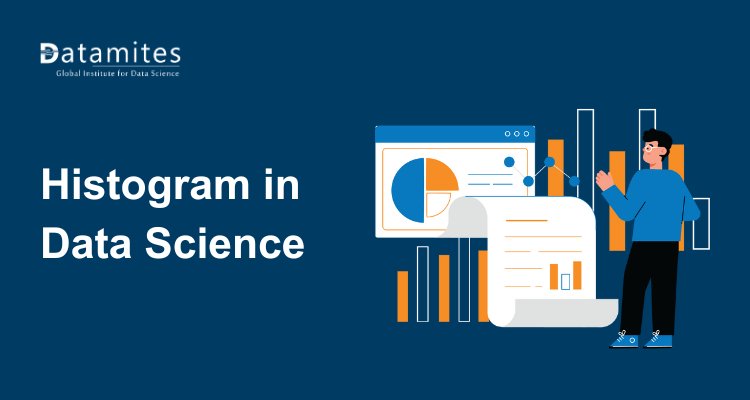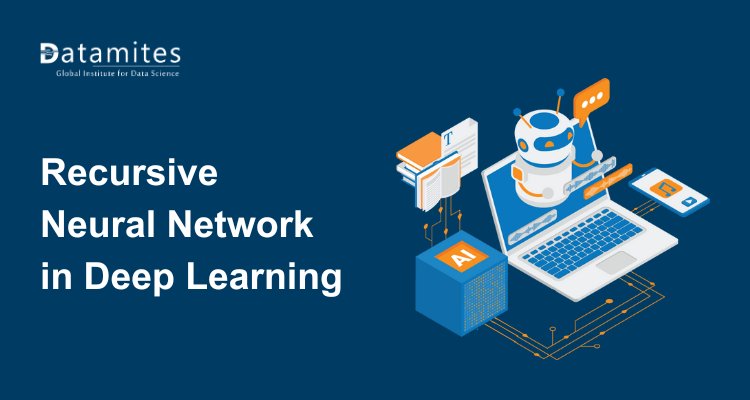Histogram in Data Science: A Quick Guide with Examples
A concise guide to histograms in data science, explaining their types, uses in exploratory data analysis, and examples to visualize numeric data distributions effectively.

Have you ever wondered how data scientists make sense of hundreds or thousands of numbers at a glance? One of the most useful tools for that is a histogram in data science. A histogram is a type of chart that compacts raw data into a visual form, letting us see the shape, spread, and surprises hidden in a dataset.
In data science, histograms are foundational for data visualization in data science because they offer an intuitive way to grasp distributions, spot outliers, and inform decisions. Whether you’re analyzing customer behavior, sales numbers, test scores, or web traffic, the histogram helps turn raw numbers into insight.
What Is a Histogram in Data Science?
A histogram is a chart that displays the distribution of a numeric variable by grouping its values into consecutive intervals (called bins) and showing how many data points fall into each bin. In simpler terms, it tells you “how many values lie between 0–10, 10–20, 20–30,” and so on.
Unlike a bar chart, a histogram is used for continuous numeric data, and the bins touch each other to show that the intervals are adjacent. In a bar chart, categories are discrete and may have gaps between bars.
In data science, histograms are central to Exploratory Data Analysis (EDA). They help you understand data distribution whether it's symmetric, skewed, has gaps or peaks, or contains outliers. According to a report by IMARC Group, the global data science platform market is expected to reach USD 144.9 billion by 2033, growing at a CAGR of 27.08% during 2025–2033. This growth underscores the increasing importance of data analysis tools and techniques, such as histograms, in the evolving data science landscape.
Importance of Histograms in Data Science
The importance of histograms in data science goes beyond just visual appeal they play a crucial role in understanding, cleaning, and preparing data for analysis. Here’s why histograms matter so much in the field of data visualization in data science:
- Understand Data Distribution: Histograms help you see how values are spread across a dataset whether evenly distributed, skewed, or concentrated in specific ranges.
- Identify Patterns and Trends: By viewing the shape of the histogram, you can quickly detect natural patterns, such as peaks (common values) or gaps (missing data ranges).
- Spot Outliers and Anomalies: Extreme bars far from the main cluster indicate outliers unusual data points that may need correction or deeper analysis.
- Detect Skewness and Data Shape: You can easily tell if the dataset is symmetric, left-skewed, or right-skewed essential for deciding which statistical or machine learning techniques to use.
- Simplify Complex Datasets: Large numeric data becomes easier to interpret, helping even beginners perform histogram analysis without technical expertise.
- Guide Better Decision-Making: Businesses use histograms to visualize patterns in sales, customer behavior, and performance metrics before making strategic choices.
- Foundation for Exploratory Data Analysis (EDA): In data science, histograms are one of the first visualization tools used to explore and summarize raw data effectively.
In short, histograms transform raw numbers into visual insights, making them an essential part of data distribution in data science and a must-know for anyone learning histogram analysis for beginners.
Refer to these articles:
- Autoregression in Data Science
- A Beginner’s Guide to Bagging in Data Science
- How Data Science Uses Cluster Analysis for Customer Segmentation
How to Read and Interpret a Histogram
Reading a histogram is simple once you understand its basic components. A histogram turns raw numeric data into a visual format that reveals the data distribution in data science, helping you make sense of large datasets.
Key Components of a Histogram:
- X-axis (Bins/Intervals): Represents ranges of the numeric variable. For example, if analyzing exam scores from 0–100, bins might be 0–10, 10–20, 20–30, and so on.
- Y-axis (Frequency): Shows how many data points fall within each bin. Taller bars indicate more data points in that range.
- Bars: Each bar’s height corresponds to the number of data points in that interval. Bars are adjacent because the intervals are continuous.
Steps to Interpret a Histogram:
Identify the shape:
- Normal / Bell-shaped: Data clusters around a central value.
- Skewed right / left: Longer tail on one side indicates asymmetry.
- Bimodal: Two peaks suggest two dominant groups in the data.
Spot patterns and trends:
- Look for clusters, gaps, or unusual peaks that indicate patterns in your data.
Detect outliers:
- Bars far away from the main cluster highlight unusually high or low values.
Understand distribution spread:
- Wide spread = more variability; narrow spread = data is concentrated.
Example: Daily Sales Data
Suppose a store records the number of items sold each day for a month. You create a histogram with bins of 0–10, 11–20, 21–30, etc.
Most bars are between 11–20, showing typical daily sales.
A few bars in 0–10 or 31–40 indicate unusually low or high sales days.
You can immediately see the data distribution and detect outliers without scanning through every number.
Table of Common Histogram Shapes
| Shape Type | What It Indicates |
| Normal | Symmetric distribution, most values near center |
| Right-skewed | Many low values, few high values |
| Left-skewed | Many high values, few low values |
| Bimodal | Two dominant groups exist |
| Uniform | Values spread evenly across all bins |

Examples of Histograms in Data Science
Here are a few simple, real-life style examples to bring things to life:
1. Customer Age Distribution in Retail
You collect ages of 1,000 customers. You plot a histogram with bins (e.g. 10–20, 20–30, 30–40, …). You may find peaks in the bins 20–30 and 30–40, indicating most customers are young adults and middle age. If there’s a small bar at 70–80, those might be outliers or a special segment.
2. Website Visit Duration
You log how many seconds each visitor spends. You make bins: 0–10 s, 10–30 s, 30–60 s, 60–120 s, etc. The histogram might show most visitors stay 10–30 s, fewer stay 60+ s, and a few stay much longer. That tail may represent highly engaged users you can study more.
3. Machine Learning Preprocessing
Before feeding a numeric feature (say, “time on page”) into a model, you build a histogram to see if the distribution is skewed. If it’s very skewed (e.g. many small values, some huge), you might apply transformations (like log) or clip extreme values. Histograms help feature engineering decisions.
Each of these helps illuminate the data distribution in data science, letting analysts make informed choices.
Refer to these articles:
- Top Databases Every Data Scientist Should Know
- Why Cloud Computing Skills Are Important for Data Scientists
- How to Deploy Your First Data Science Project on the Cloud
Benefits of Using Histograms in Data Science
Here are key advantages in bullet form:
- Easy visualization: raw numeric data becomes immediately understandable
- Pattern detection: uncover central tendencies, tails, multimodal behavior
- Outliers & anomalies: spot values that lie far from the bulk
- Simplifies large datasets: compresses hundreds or thousands of points into a clear summary
- Informs decisions: guides data transformations, model assumptions, segmentation
These benefits make histograms an essential tool in your data science skills toolkit.
In the journey to become fluent in data science skills, learning to read and use a histogram in data science is a must. Histograms help you see the shape of your data, detect outliers, understand distribution, and guide your analyses. As you explore applications of data science, visualization tools like histograms become your intuitive companions.
If you’re ready to dive deeper, explore a Data Science Career path or join a hands-on course that walks you through tools like Python, R, or Tableau. Practice plotting histograms on your datasets and soon, histogram analysis will feel natural, not intimidating.
Step into the world of data science and discover how visual tools like histograms turn numbers into knowledge. Enrolling in a data science course in Bangalore, Chennai, Hyderabad, Pune, Coimbatore, Ahmedabad, or Mumbai can provide you with practical skills, hands-on project experience, and actionable insights key essentials for anyone looking to grow in this data-driven world. Understanding concepts like histogram in data science will allow you to visualize distributions, detect patterns, and make informed decisions across industries, turning raw data into meaningful knowledge and enhancing your analytical capabilities.
One institute leading the way is DataMites Training Institute. DataMites industry-focused curriculum emphasizes experiential learning, giving students exposure to real-world challenges through live projects and practical examples. The DataMites Certified Data Scientist courses, accredited by IABAC and NASSCOM FutureSkills, cover essential topics such as data visualization in data science, machine learning, Python programming, MLOps, Data Engineering, and Artificial Intelligence, equipping students with in-demand skills for diverse industries.
DataMites Institute offers data science training in Hyderabad, Chennai, Bangalore, Pune, Coimbatore, Ahmedabad, and Mumbai. The courses include hands-on projects on examples of histograms in data science, internships, and placement support, helping students apply their learning and kickstart their careers. Flexible learning options allow you to choose between online or offline modes, ensuring access to the same comprehensive training, along with real-world applications and internship opportunities, no matter where you are.





